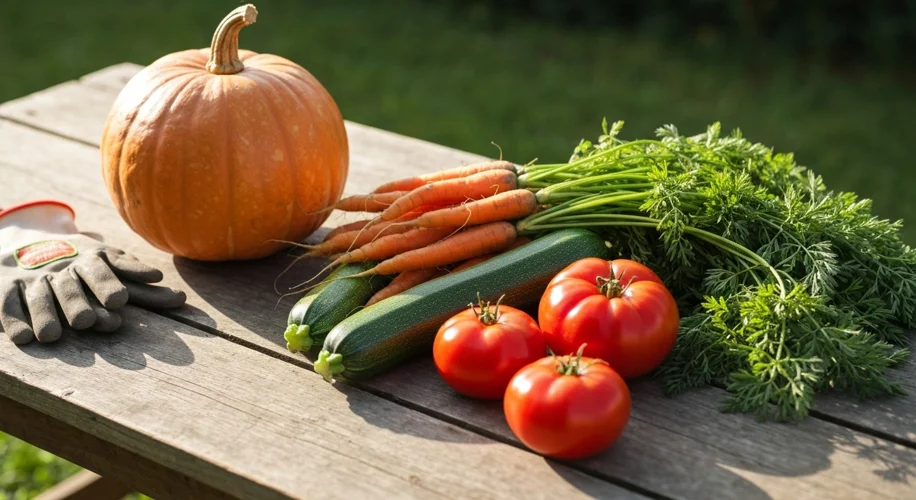As the days start to shorten and the air gets a crisp edge, it’s prime time to gather the fruits (and vegetables!) of our labor. My garden is bursting, and August 24th, 2025, feels like the perfect moment to talk about harvesting and making the most of what we’ve grown.
Pumpkins: More Than Just Halloween
One of my favorite sights this time of year is the developing pumpkins. I always grow a few varieties, from the smaller sugar pumpkins perfect for pies to the larger ones that make great decorations. When it comes to harvesting, the key is a strong stem and a deep, uniform color. I usually give the pumpkin a gentle tap; a hollow sound often indicates ripeness. Crucially, I cut the stem with a good few inches attached, as this helps them store longer.
For storage, pumpkins need a cool, dry place. My garden shed works well. They can last for months if cured properly, which means letting them sit in a warm, dry spot for about 10 days after harvesting to harden the skin. This also makes them less susceptible to rot.
Beyond Pumpkins: Other Late Summer Stars
It’s not just pumpkins, of course. My tomatoes are still producing, and I’m picking zucchini almost daily. Green beans are yielding well, and my peppers are starting to ripen. I’m also seeing the first signs of readiness in my late-season carrots and beets.
Storing Your Garden’s Best
- Tomatoes: While some people refrigerate them, I find they lose flavor. I prefer to store ripe tomatoes at room temperature, out of direct sunlight, for a few days. Unripe ones can be picked and brought inside to ripen on the counter.
- Zucchini & Summer Squash: These are best used fresh. If you have an abundance, grating and freezing them is a great option for later use in muffins or breads.
- Green Beans: Blanched and frozen green beans keep their vibrant color and crispness for months. Blanching is just a quick dip in boiling water, followed by an ice bath.
- Herbs: Many herbs, like basil and parsley, can be chopped and frozen in ice cube trays with a little water or olive oil. This preserves their flavor and makes them easy to add to cooking.
Recipes to Savor the Season
With this bounty, it’s time to get cooking!
- Pumpkin Pie: A classic for a reason. Using those smaller sugar pumpkins makes for a richer, sweeter pie filling.
- Zucchini Bread or Muffins: A fantastic way to use up excess zucchini. A touch of cinnamon and nutmeg makes them extra cozy.
- Ratatouille: This Provençal stew is perfect for a mix of summer vegetables like eggplant, zucchini, tomatoes, and peppers.
- Roasted Root Vegetables: Carrots, beets, and even potatoes benefit from roasting. A little olive oil, salt, pepper, and maybe some fresh thyme from the garden, and you have a simple, delicious side dish.
Harvesting and using your garden’s bounty is one of the most rewarding aspects of growing your own food. It connects us to the seasons and offers incredible flavor. Don’t let that hard-earned produce go to waste – embrace the harvest and enjoy the delicious results!

